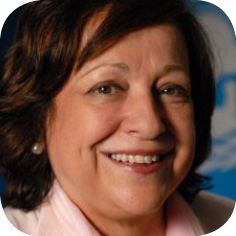 On this auspicious occasion of the 30th anniversary of the United Nations Convention on the Rights of the Child (CRC), we rightly celebrate the impressive gains achieved for the children of the world.*1 The global mortality rate for children under 5 years of age has declined significantly. Hundreds of millions more children are being vaccinated and have access to clean water and adequate nutrition. Millions more children are going to school. More countries have translated the international CRC treaty into their national laws and policies, ensuring that all their children enjoy all their rights.
On this auspicious occasion of the 30th anniversary of the United Nations Convention on the Rights of the Child (CRC), we rightly celebrate the impressive gains achieved for the children of the world.*1 The global mortality rate for children under 5 years of age has declined significantly. Hundreds of millions more children are being vaccinated and have access to clean water and adequate nutrition. Millions more children are going to school. More countries have translated the international CRC treaty into their national laws and policies, ensuring that all their children enjoy all their rights.
Unfortunately, progress has occurred only for some, leaving millions of other children left behind, with their rights to thrive and grow to their full potential denied. We know that over 250 million children under 5 years of age in low- and middle-income countries will face social inequity and fail to reach their developmental potential. They will be met by a range of risk factors that include poverty, poor health, abuse, neglect, and exploitation, as well as inadequate care and lack of learning opportunities.*2
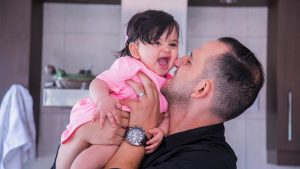
© UNICEF/UN0217150/Shennawi.
This is compounded by situations of war, protracted wars, violent conflicts, military occupation, and displacement, to which families and children are exposed, disrupting the fabric of their societies and compromising the very foundation of their institutions. This is a time of unprecedented displacement of more than 70 million people, primarily women and children.*3 An estimated 50 million children have migrated across borders or have been forcibly displaced, and 28 million children have been uprooted by horrific violence.*4
Most worryingly, the exposure of parents to instability and stress challenges their ability to provide for their children who need their protection and nurturing care.
Today millions of children are trapped in situations of war, conflict, violence, and displacement. Science shows that violence has a detrimental effect on the development of young children. It also heralds a new era, with opportunities to contribute to sustaining peace and preventing violence through investment in early childhood development.
The plight of children and their families whose lives have been shattered by armed conflict and occupation continues to haunt us. Images of children suffering from appalling abuses continue to haunt us. Images of children fleeing their homes, communities, and villages continue to haunt us. Images of children abducted and detained behind bars continue to haunt us. What is even more alarming and should concern us all is the lasting negative impact of d these detrimental effects will eventually affect our societies and communities.*5
Exposure to toxic stress and adversity at an early age is related to a broad range of negative outcomes that can occur across the life span. These include major emotional and behavioral problems, which can become self-perpetuating cycles that continue for generations.

But we can say with confidence that advances in developmental neuroscience and in an emerging and well-established body of scientific evidence from multiple disciplines (epigenetics, psychology, and economics) hold significant implications for the future of millions of children who live in fragile and emergency contexts. Evidence-based science continues to substantiate the link between the early years of life and the early life environment with long-term well-being. It also substantiates the link between violence prevention and the development of prosocial behaviors that can lead to more peaceful communities.*6,*7
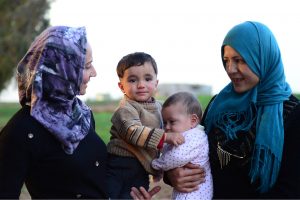
This new science heralds an era with windows of opportunities to contribute to sustainable development and peace through investing in positive early childhood development (ECD). It further highlights the importance of responsive parenting and reinforces the evidence that shows how early stimulation, bonding, and safe environments can positively influence early brain development so that children can grow, learn, and thrive.*8,*9
In these critical times, there is, unfortunately, insufficient investment in the early years of life as a path to human and sustainable development, peace, and violence prevention. This is true despite the existence of many examples of early childhood programs that have been successfully developed and disseminated across the globe, from Afghanistan to South Africa, Nigeria, Northern Ireland, Turkey, and Lebanon.*10,*11,*12 The holistic and inclusive approach of these programs aims to mitigate trauma, promote emotional regulation and sensitivity to others, eliminate harsh punishment, and encourage the formation of positive social relationships within families and communities.*13
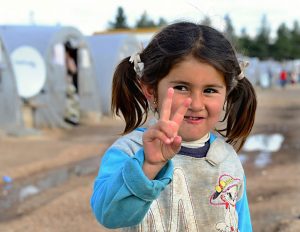
It is time to elevate the position of ECD on the development and global peace agenda. It is time to demonstrate by science and practice how the transformative power of ECD strategies and programs can reduce violence, poverty, exclusion, and inequity.
In this regard, we need to unite our strengths and advocate for universal access to ECD. Most importantly, we must emphasize the urgent need for increased investment in programs for families and young children who live in emergency contexts. “They cannot be left behind.”
We need to continue in the pursuit of knowledge and address the gaps in science with a focus on interdisciplinary research. Doing so will help reinforce the evidence that will further inform global policies, national policies, strategies, and programs for ECD.
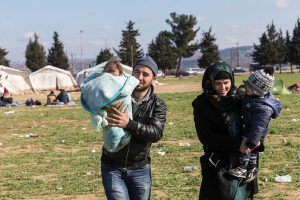
We have the knowledge and experience. “It is our shared responsibility” to design ECD programs for the children of Palestine and the MENA region in collaboration with the Arab Network for Early Childhood Development. They should be multileveled, benefiting the child, the family/parents/caregivers, the community, and the institutions at the national and regional levels. The programs should be safe, protective, and inclusive. Most importantly, they must be culturally sensitive, address the needs of the family, and allow children and parents the space they need to be the driving force for social change. “The time is now.”

It is only by moving together that we can secure the rights of Palestinian children and the children in the MENA region for sustainable development and peace. In order to accomplish this, we need an unfailing vision and an unwavering commitment, as well as a strong partnership for and with children and their families. The International Conference on Children, Hope and Peace: A Global and Local Perspective being held at the Palestinian Child Institute at An-Najah National University in Nablus, Palestine, is a giant leap forward on the right path.
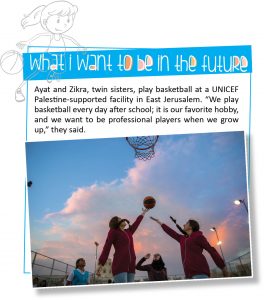
*1 United Nations General Assembly Convention on the Rights of the Child, United Nations Treaty Series, Vol. 1577, 1989. Retrieved from https://treaties.un.org/doc/Publication/UNTS/Volume%201577/v1577.pdf.
*2 The Lancet, “Advancing early childhood development: From science to scale,” 2016. Retrieved from https://www.thelancet.com/pb-assets/Lancet/stories/series/ecd/Lancet_ECD_Executive_Summary.pdf.
*3 United Nations High Commissioner for Refugees (UNHCR), Global report 2018. Retrieved from http://reporting.unhcr.org/sites/default/files/gr2018/pdf/GR2018_English_Full_lowres.pdf.
*4 United Nations Children’s Fund (UNICEF), “Uprooted: The growing crisis for refugees and migrant children,” 2016. Retrieved from https://weshare.unicef.org/Package/2AMZIFQ.
*5 J.F. Leckman, “The transformative power of responsive parenting: Perspectives, concepts, dimensions and next steps,” 2014, UN High-level Forum on The Culture of Peace, organized by Yale University, the Early Childhood Peace Consortium, and UNICEF, New York, NY: UNICEF.
*6 Early Childhood Peace Consortium, “Contributions of early childhood development services to preventing violent conflict and sustaining peace,” 2017. Retrieved from http://www.ecdpeace.org/sites/default/files/files/ECPC_Brief-v6FINAL_ENG.pdf.
*7 M.R. VanTieghem and N. Tottenham, “Neurobiological programming of early life stress: Functional development of amygdala-prefrontal circuitry and vulnerability for stress-related psychopathology,” Current Topics Behavioral Neuroscience, 2017 Apr 25, https://doi.org/10.1007/7854_2016_42. [Epub ahead of print].
*8 P.R. Britto, I. Gordon, W. Hodges, D. Sunar, C. Kağitçibaşi, and J.F. Leckman, “Ecology of peace,” in J. F. Leckman, C. Panter-Brick, and R. Salah (eds.), Pathways to peace: The transformative power of children and families, pp. 27–42, Boston, MA: MIT Press, 2014.
*9 United Nations Children’s Fund (UNICEF), “Early childhood development, a statistical snapshot: Building better brains and outcomes for children,” 2014. Retrieved from https://www.unicef.org/earlychildhood/files/ECD_Brochure_FINAL_LR.pdf.
*10 M.M. Black, S.P. Walker, L.C. Fernald, C.T. Andersen, A.M. DiGirolamo, C. Lu, and J. Shiffman, “Early childhood development coming of age: Science through the life course,” The Lancet, 389 (10064), pp. 77–90, 2017.
*11 P.R. Britto, S.J. Lye, K. Proulx, A.K. Yousafzai, S.G. Matthews, T. Vaivada, and L.C. Fernald, “Nurturing care: Promoting early childhood development, The Lancet, 389 (10064), pp. 91–102, 2017.
*12 L.M. Richter, B. Daelmans, J. Lombardi, J. Heymann, F.L. Boo, J.R. Behrman, and T. Dua, “Investing in the foundation of sustainable development: Pathways to scale up for early childhood development,” The Lancet, 389 (10064), pp. 103–118, 2017.
*13 J.F. Leckman, C. Panter-Brick, and R. Salah (eds.), Pathways to peace: The transformative power of children and families, Boston, MA: MIT Press, 2014.

